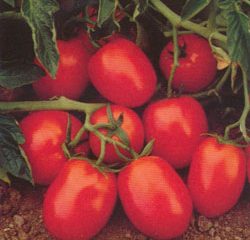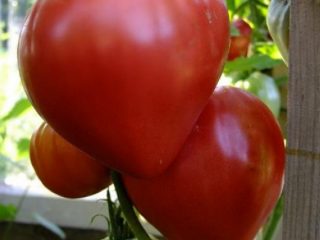Content
Many gardeners are familiar with different methods of growing seedlings, including very economical and unusual ones. But you always want to experiment and try something new. Today we will talk about growing tomato seedlings in toilet paper, and no soil or special substrate is needed.
What is the essence of the method
This technology appeared relatively recently, but has already gained considerable popularity among summer residents. The main secret to the success of the method is its low cost. So, what you will need for planting.
- A large plastic glass (optionally a cut-off plastic bottle);
- Several plastic bags (they can be replaced with scraps of old polyethylene);
- Toilet paper (1 roll).
At the first stage of growing tomato seedlings, soil is not needed. The need for soil will appear during picking (with the development of cotyledon leaves).
How it's done
We are starting to get used to the new method of germinating seeds for seedlings. The algorithm of actions is as follows.
- Cut strips of film 100 mm wide. You need enough strips so that all the seeds can be placed in 1 row.
- Lay out the resulting polyethylene strips and lay a paper layer on each of them.If the paper is thin, it is better to place it in two layers. Moisten it with water.
- Place the seeds on the toilet paper, starting from a point 10mm from the edge. Place the seeds so that the interval between them is 20-30 mm.
- Cover the seeds with a strip of toilet paper and sprinkle it with water. On top there is again a plastic strip. Now all that remains is to roll up the resulting tape.
- Secure the roll with a rubber band and place it in a glass so that the seeds are at the top. Fill the glass with water so that it does not reach the grains. Now our future seedlings are in almost ideal conditions. It will receive oxygen from the air, and water will be absorbed and delivered to them by toilet paper.
- Place the prepared seeds in a well-lit place. The first shoots can be expected in about 7 days.
Features of care
Caring for seeds prepared without soil with this original planting method is minimal. Fertilizer will be needed when the seedlings hatch. For this reason, a soil mixture is not needed. A weak solution of humic acid is suitable as a top dressing. The next feeding will be needed when the first true leaf appears. With the formation of two or three true leaves, you can make a pick.
Carefully, so as not to damage the roots, unroll the roll and remove the plastic wrap. Plant young seedlings in pots, carefully separating them from the paper and first discarding weak plants. The seedlings turn out clean, not soiled in the ground, so replanting them is not at all difficult.Further cultivation of tomato seedlings is the same as with all other methods.
Practice shows that the percentage of weak sprouts is much lower than with other methods. The sprouts are less injured and take root quickly. The peculiarity of seedlings grown in this way is that they have short internodes, which has a beneficial effect on the yield of tomatoes. For picking, a universal soil mixture, which is sold in specialized stores, is suitable.
This method can also be used when growing other crops: peppers, eggplants, cabbage. It is especially preferable for large-seeded vegetables with a sufficient supply of nutrients.
Longitudinal cultivation
For the method of growing seedlings in a bottle, you will need the same devices as for the “roll” method. Just don’t cut the plastic bottle horizontally, but cut it lengthwise. Line the bottom of the resulting halves with toilet paper, moisten it with water, and place the grains on a paper “mattress.” Cover the seeds with plastic and place the plastic “boats” in a well-lit place. All that remains is to wait for the shoots to appear.
What are the advantages of the method
As already mentioned, seedlings grown on toilet paper take root well and are resistant to diseases (in particular, blackleg). It is possible to use the method for seedlings of hybrid tomatoes, the cost of which is far from low. Almost all the sprouts survive at the time of picking. Here are some more benefits.
- Possibility of growing seedlings from expired seeds.
- Easy to care for, fast growing.
- Minimum space occupied by seedlings.There is no need for huge boxes on the windowsill.
Flaws
- If the plant is too light and heat-loving, it may grow somewhat slowly.
- Stretching of stems due to insufficient growth of rhizomes.
Of course, there are disadvantages, but all the advantages of the method are appreciated even by novice gardeners who are interested in how to grow seedlings with minimal losses. The seedlings turn out healthy, with good survival rate. Subsequently, they tolerate planting well in the ground.













